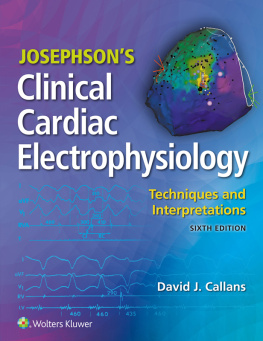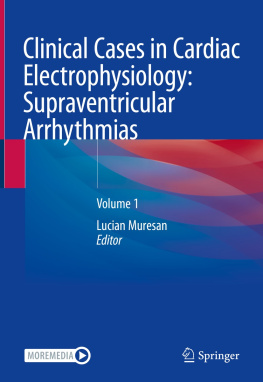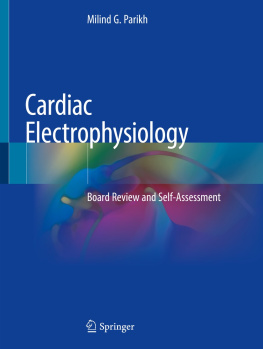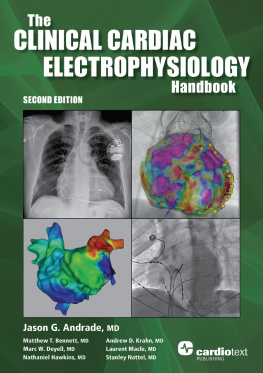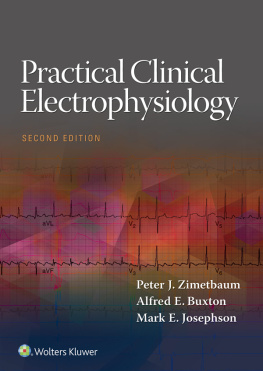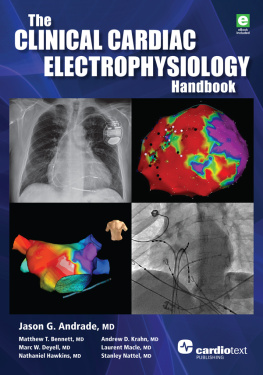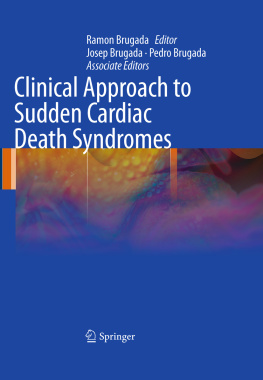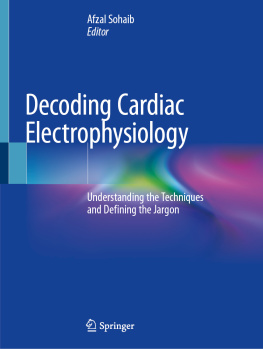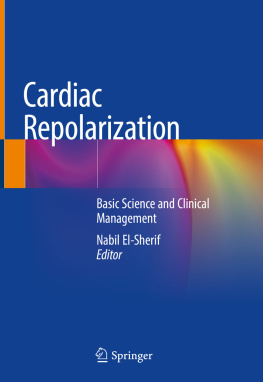Contents
Guide
JOSEPHSONS
Clinical Cardiac Electrophysiology
Techniques and Interpretations
SIXTH EDITION
David J. Callans, MD
Professor of Medicine
Perelman School of Medicine at the University of Pennsylvania
Associate Director of Electrophysiology
University of Pennsylvania Health System
Philadelphia, Pennsylvania

Executive Editor: Sharon Zinner
Senior Development Editor: Ashley Fischer
Editorial Coordinator: Ashley Pfeiffer
Marketing Manager: Phyllis Hitner
Production Project Manager: Barton Dudlick
Design Coordinator: Elaine Kasmer
Manufacturing Coordinator: Beth Welsh
Prepress Vendor: Aptara, Inc.
6th edition
Copyright 2021 Wolters Kluwer.
5th edition 2016 Wolters Kluwer; 4th edition 2008 by Lippincott Williams & Wilkins; 3rd edition 2002 by Lippincott Williams & Wilkins; 2nd edition 1993 by Lea & Febiger. All rights reserved. This book is protected by copyright. No part of this book may be reproduced or transmitted in any form or by any means, including as photocopies or scanned-in or other electronic copies, or utilized by any information storage and retrieval system without written permission from the copyright owner, except for brief quotations embodied in critical articles and reviews. Materials appearing in this book prepared by individuals as part of their official duties as U.S. government employees are not covered by the above-mentioned copyright. To request permission, please contact Wolters Kluwer at Two Commerce Square, 2001 Market Street, Philadelphia, PA 19103, via email at (products and services).
9 8 7 6 5 4 3 2 1
Printed in China
Library of Congress Cataloging-in-Publication Data
Names: Callans, David J., author. | Josephson, Mark E. Josephsons clinical
cardiac electrophysiology.
Title: Josephsons clinical cardiac electrophysiology : techniques and
interpretations / David J. Callans.
Other titles: Clinical cardiac electrophysiology
Description: 6th edition. | Philadelphia : Wolters Kluwer, [2021] |
Preceded by Josephsons clinical cardiac electrophysiology / Mark E.
Josephson. Fifth edition. [2016] | Includes bibliographical references
and index. | Summary: The purpose of this book is to provide the
budding electrophysiologist with an electrophysiologic approach to
arrhythmias, which is predicated on the hypothesis that a better
understanding of the mechanisms of arrhythmias will lead to more
successful and rationally chosen therapy. As such, this book will stress
the methodology required to define the mechanism and site of origin of
arrhythmias so that safe and effective therapy can be chosen. The
techniques suggested to address these issues and specific therapeutic
interventions employed represent a personal view, one that is based on
experience and, not infrequently, on intuition Provided by publisher.
Identifiers: LCCN 2020012651 | ISBN 9781975115562 (paperback)
Subjects: MESH: Electrophysiologic Techniques, Cardiacmethods |
Arrhythmias, Cardiacdiagnosis | Arrhythmias, Cardiactherapy | Heart
Conduction Systemphysiopathology
Classification: LCC RC683.5.E5 | NLM WG 141.5.F9 | DDC 616.1207547dc23
LC record available at https://lccn.loc.gov/2020012651
This work is provided as is, and the publisher disclaims any and all warranties, express or implied, including any warranties as to accuracy, comprehensiveness, or currency of the content of this work.
This work is no substitute for individual patient assessment based upon healthcare professionals examination of each patient and consideration of, among other things, age, weight, gender, current or prior medical conditions, medication history, laboratory data and other factors unique to the patient. The publisher does not provide medical advice or guidance and this work is merely a reference tool. Healthcare professionals, and not the publisher, are solely responsible for the use of this work including all medical judgments and for any resulting diagnosis and treatments.
Given continuous, rapid advances in medical science and health information, independent professional verification of medical diagnoses, indications, appropriate pharmaceutical selections and dosages, and treatment options should be made and healthcare professionals should consult a variety of sources. When prescribing medication, healthcare professionals are advised to consult the product information sheet (the manufacturers package insert) accompanying each drug to verify, among other things, conditions of use, warnings and side effects and identify any changes in dosage schedule or contraindications, particularly if the medication to be administered is new, infrequently used or has a narrow therapeutic range. To the maximum extent permitted under applicable law, no responsibility is assumed by the publisher for any injury and/or damage to persons or property, as a matter of products liability, negligence law or otherwise, or from any reference to or use by any person of this work.
shop.lww.com
This book is dedicated to my beloved Melissa. She tempered the vast range of emotions that somehow were required for me to accomplish this edition. Her love and support and her belief in me have been so strong. There is no way that I could have done this without her.
It might seem proper to dedicate this book to Mark Josephson, but it is and will always be Marks book and not mine. He ignited the spark that became my love for electrophysiology and he is one of the best friends I have ever had. I must also recognize Marks colleagues, friends, fellowsMarks armyfollowing his example to fight for all that is right and good with this noble field.
D.C.
FOREWORD
Historical Perspectives
The study of the heart as an electrical organ has fascinated physiologists and physicians for over 150 years. Matteucci who discovered the muscle bundle joining the atrial and ventricular septae that is known as the common A-V bundle or the bundle of His.
During the first half of the 20th century clinical electrocardiography gained widespread acceptance, and, in feats of deductive reasoning, numerous electrocardiographers contributed to the understanding of how the cardiac impulse in man is generated and conducted. Those researchers were, however, limited to observation of atrial (P wave) and ventricular (QRS complex) depolarizations and their relationships to one another made at a relatively slow recording speed (25 mm/s) during spontaneous rhythms. Nevertheless, combining those carefully made observations of the anatomists and the concepts developed in the physiology laboratory, these researchers accurately described, or at least hypothesized, many of the important concepts of modern electrophysiology. These included such concepts as slow conduction, concealed conduction, A-V block, and the general area of arrhythmogenesis, including abnormal impulse formation and reentry. Some of this history was reviewed by the late Langendorf. The diagrams in that manuscript are as accurate today as they were hypothetical in 1933. Much of what has followed the innovative work of investigators in the first half of the century has confirmed the brilliance of their investigations.

